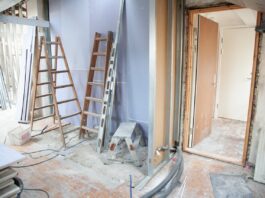Few things are more frustrating than walking into your house on a hot day and realizing your system isn’t working. Sweat starts building, frustration sets in, and you’re left wondering what to do next. The good news? You don’t have to panic.
When it happens, it’s easy to feel stuck. But taking the right steps can help you stay safe, comfortable, and ready to get things fixed quickly. Instead of stressing, follow these simple actions to handle the situation like a pro and restore comfort in no time.
Check the Basics
Before you assume the worst, start small. Sometimes the system isn’t broken—it’s just a minor issue. Make sure the breaker hasn’t tripped. Double-check that the thermostat is set to the correct mode and temperature. If it runs on batteries, replace them to be safe. Don’t forget the filter, either. A clogged filter restricts airflow and can make the unit shut down. These small checks take just a few minutes and can save you the cost of a service call if the problem is simple.
Call a Professional
Not every issue is simple, and that’s when expert help matters most. Strange noises, no airflow, or water pooling near your system are signs you shouldn’t ignore. A skilled technician can safely identify the cause and recommend the right solution. Acting quickly also prevents minor problems from turning into major repairs. Sometimes, the issue is considered an air conditioner emergency. According to experts, a complete system failure during extreme heat, especially for families with young children or elderly members, is a clear sign you need urgent help. Calling professionals ensures your comfort and health are restored fast.
Keep Your Cool with Temporary Relief
While waiting for repairs, you don’t have to suffer. Close blinds and curtains to block sunlight from heating the rooms. Use fans to circulate air and create a breeze that feels more comfortable. Portable units can also provide temporary relief in key areas of your home. Staying hydrated is another must. Drink plenty of water and avoid cooking with ovens or stoves that make the house hotter. These steps may not solve the problem, but they’ll make waiting much more bearable until the system is back up and running.
Look for Warning Signs
Paying attention to what your system is telling you helps in the long run. Odd noises like rattling, squealing, or hissing are all red flags. Water leaking around the unit or weak airflow from vents are also common indicators of trouble. By spotting these early, you can explain the symptoms to a technician and speed up the repair process. Ignoring them, on the other hand, may lead to bigger breakdowns later. Think of it as gathering clues before the expert arrives.
Write Down What You Observe
When things go wrong, details matter. Take a few minutes to jot down what you notice. Write the time the problem started, what the system was doing, and whether you heard or saw anything unusual. If possible, take a photo of leaks or error messages on the thermostat. This record helps professionals understand the situation faster and more accurately. It also gives you peace of mind knowing you’ve done your part to help. A little note-taking now can save both time and money during repairs.
Check for Blocked Vents and Airflow Issues
Sometimes the problem isn’t with the system at all—it’s with the airflow inside your home. Walk around and make sure furniture, curtains, or rugs don’t block vents. Dust or pet hair can also build up and restrict circulation. Blocked vents make the system work harder, and that can shorten its life. Taking a few minutes to clear pathways for air helps restore comfort faster and prevents unnecessary strain. This small step is often overlooked but makes a big difference in performance.
Inspect for Water Leaks Around the Unit
Water pooling near the inside or outside unit is a sign of trouble. It could mean a clogged drain line or even a frozen coil that’s melting. Moisture may seem minor, but if left unchecked, it can lead to mold, damage to walls or floors, and costly repairs. If you notice leaks, turn off the system and clean up the water right away. Then, call for professional service to handle the cause. Early action keeps damage to a minimum and ensures your home stays safe.
Avoid DIY Fixes Beyond the Basics
It’s tempting to grab a toolkit and start experimenting, but this often creates more harm than good. Beyond simple checks like replacing filters or batteries, repairs should be left to trained technicians. Modern systems are complex, with electrical parts and refrigerants that require special handling. Trying to fix them without proper knowledge can be dangerous and may even void warranties. Save yourself the risk and call in the pros for anything that seems complicated. It’s safer, faster, and ultimately less expensive than a failed do-it-yourself attempt.
Keep Family and Pets Comfortable
When your system stops working, it’s not just about temperature—it’s about health and comfort too. Make sure children and elderly family members are in the coolest areas of the home. Keep pets hydrated and away from hot rooms. Consider spending time in shaded outdoor spaces or visiting a friend’s house if the indoor temperature gets too high. Taking care of everyone’s comfort while waiting for repairs makes the experience less stressful. A little planning goes a long way toward keeping the household safe.
Schedule Regular Maintenance to Prevent Future Breakdowns
One of the best ways to avoid problems is through routine maintenance. Scheduling a professional check at least once a year ensures small issues are caught before they grow. Cleaning coils, checking refrigerant levels, and testing safety switches are just a few of the steps included in service visits. Preventive care keeps your system running smoothly and extends its life. It also gives you peace of mind knowing you’ve taken action to avoid another stressful breakdown. Think of it as an investment in comfort and reliability.
A system failure can feel overwhelming, but it doesn’t have to ruin your day. By checking the basics, calling professionals when needed, and using temporary relief, you stay in control. Most importantly, regular maintenance prevents future problems and saves money in the long run. Taking these steps helps protect your comfort, health, and peace of mind. With the right plan, even a sudden breakdown becomes just another challenge you’re ready to handle.



